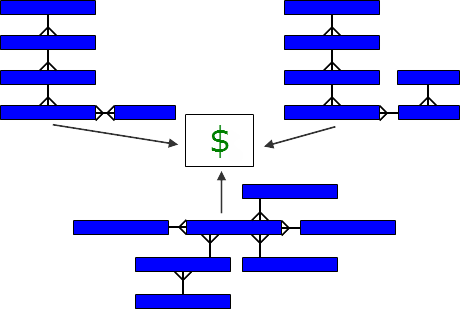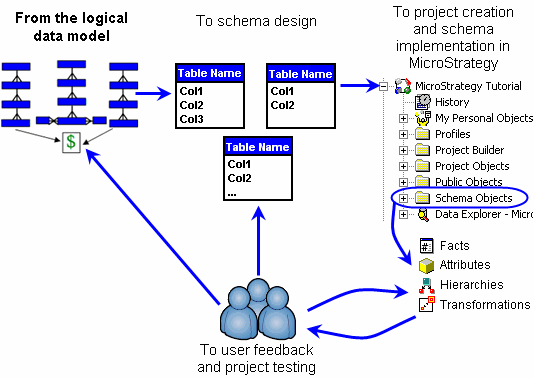MicroStrategy ONE
Overview of a logical data model
A logical data model is similar in concept to using a map and an itinerary when going on a trip. You need to know where you are going and how to get there. You also need a plan that is visible and laid out correctly. For example, a simple logical data model for a retail company can organize all necessary facts by store, product, and time, which are three common business perspectives typically associated with a retail business.
Logical data models are independent of a physical data storage device. This is the key concept of the logical data model. The reason that a logical data model must be independent of technology is because technology is changing so rapidly. What occurs under the logical data model can change with need or with technology, but the blueprint remains the same, and you do not need to start over completely.
If you are familiar with multidimensional data modeling, logical data modeling is similar to multidimensional data modeling. As the MicroStrategy platform does not require you to define dimensions explicitly, the word logical is a more accurate term than multidimensional. While a multidimensional data model must have at least one dimension, a logical data model may or may not have any explicitly defined dimensions.
The scope and complexity of a logical data model depends on the requirements of the reporting needs of the user community and the availability of source data. The more sophisticated and complex the reporting requirements and source data, the more complex the logical data model becomes.
The logical data modeling process produces a diagram similar to the one shown in the following diagram:

A logical data model represents the definition, characteristics, and relationships of data in a technical, conceptual, or business environment. This process can help you think about the various elements that compose your company's business data and how those elements relate to one another.
Devising a logical data model for your business intelligence environment allows you to then consider various ways to physically store the business data in the data warehouse. This is usually one of the first steps in designing a project, as shown in the following diagram:

This chapter provides conceptual information about logical data models, the elements that exist within them, and also general instructions and guidelines for creating these models.
A logical data model is a graphic representation of the following concepts:
